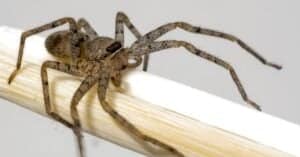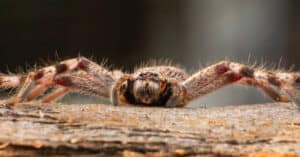Spiders and scorpions are both capable of driving deep-seated fear into the hearts of many, where they will live out their days along with the humans they cling to. Deep down, many people can trace their fears back to a very basic and primal human fear of the unknown and, even more so, the dark. The dark is where a vast amount of spiders and scorpions live for completely different reasons. When we are in the dark, we aren’t big fans of bumping into the unknown, which just adds to the fear. The spiders in this article may look an awful lot like scorpions, but they just aren’t anything like them in reality.
What Is a Scorpion? What Is a Spider?
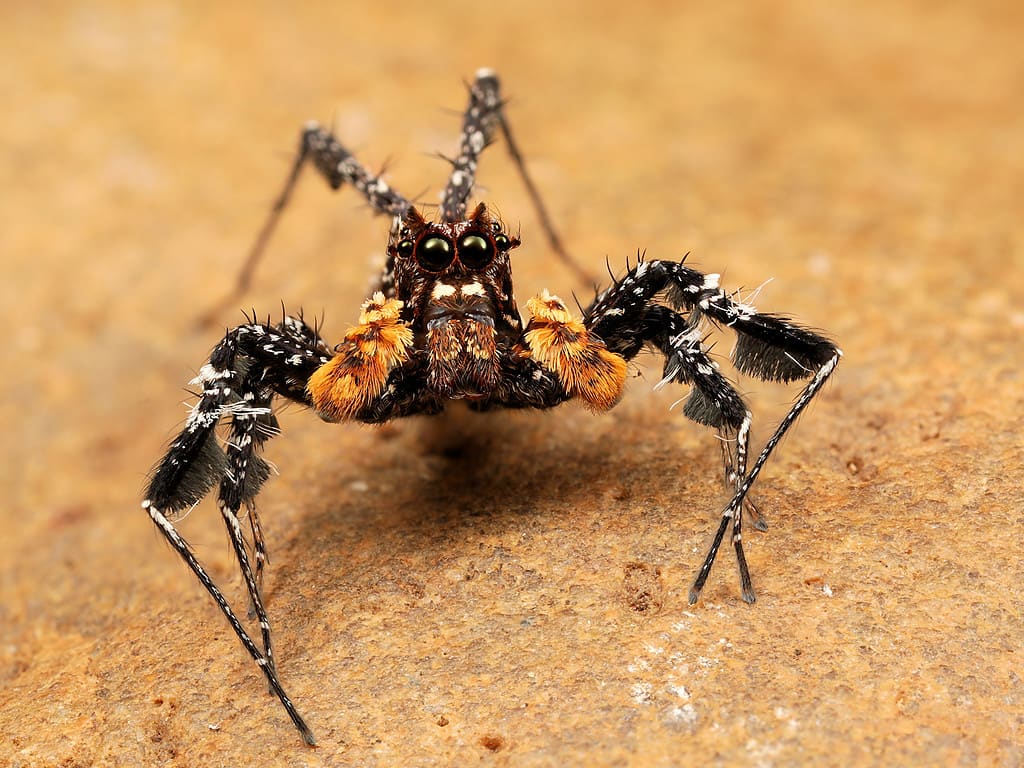
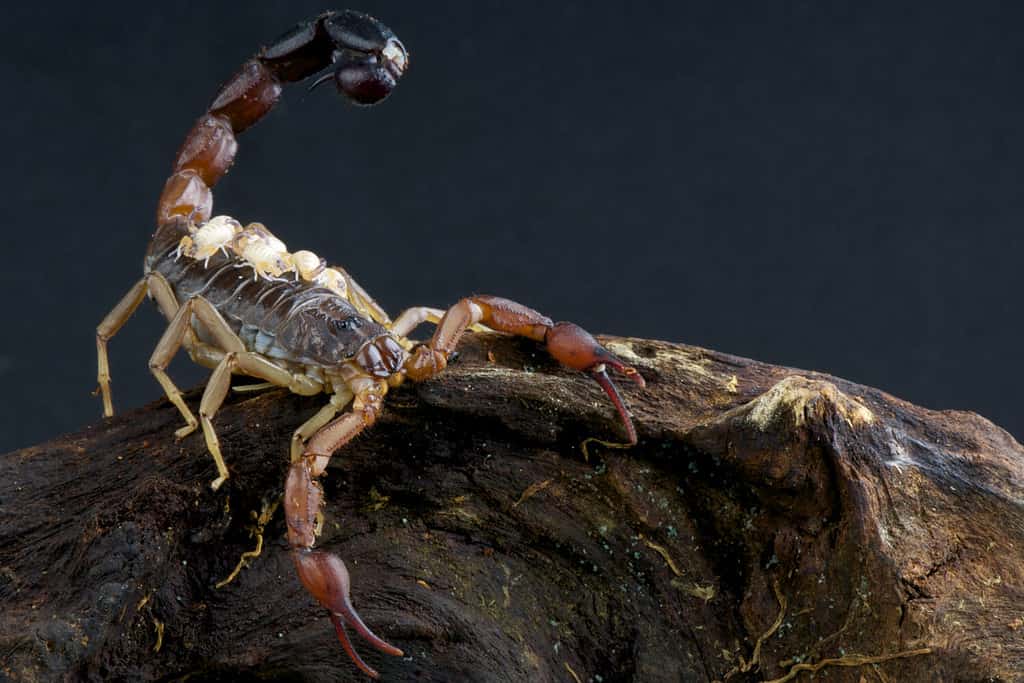
©reptiles4all/Shutterstock.com

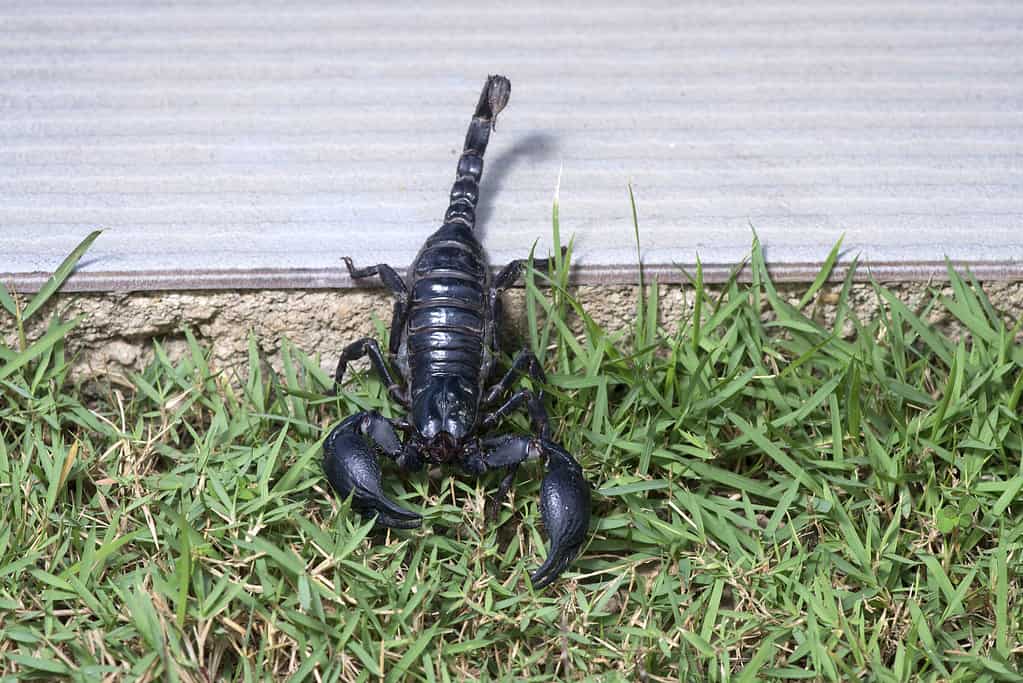
©iStock.com/ApisitWilaijit
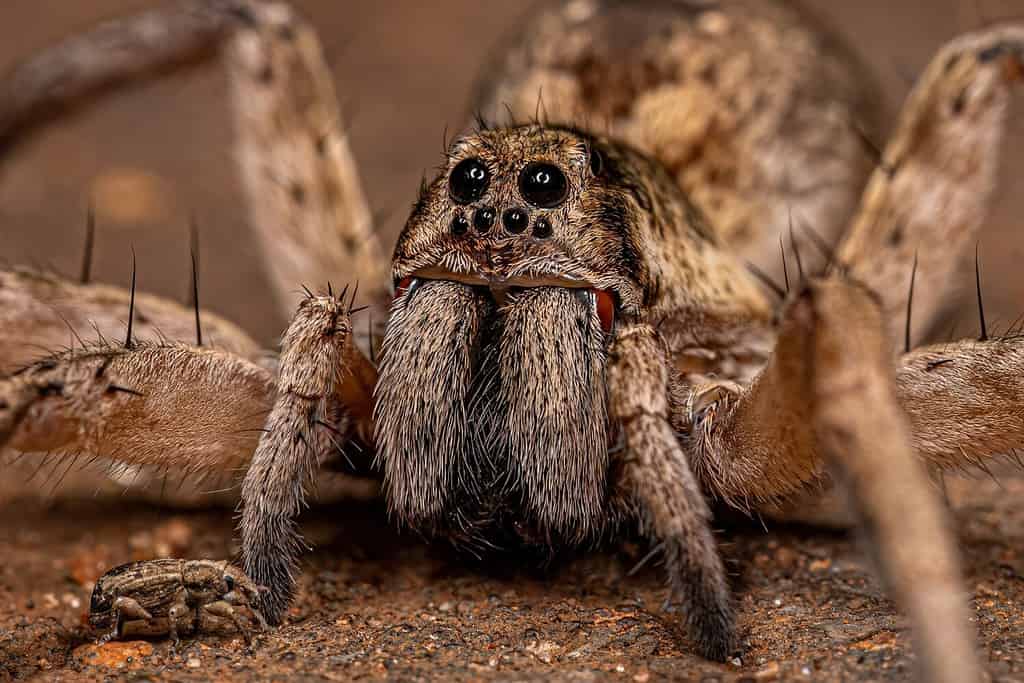
©Vinicius R. Souza/Shutterstock.com
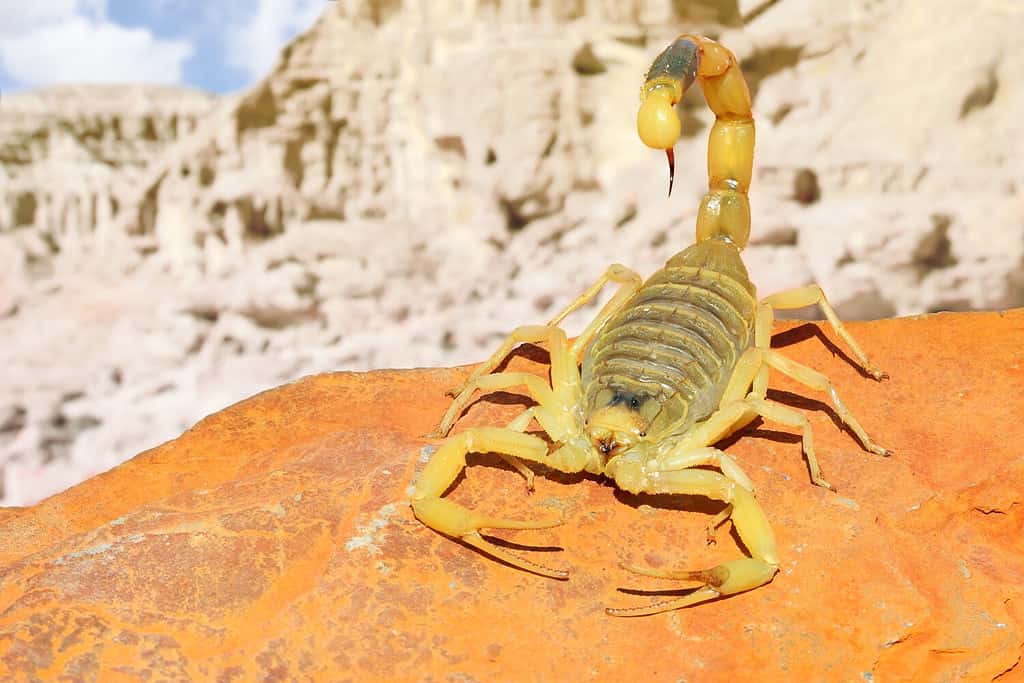
©Protasov AN/Shutterstock.com
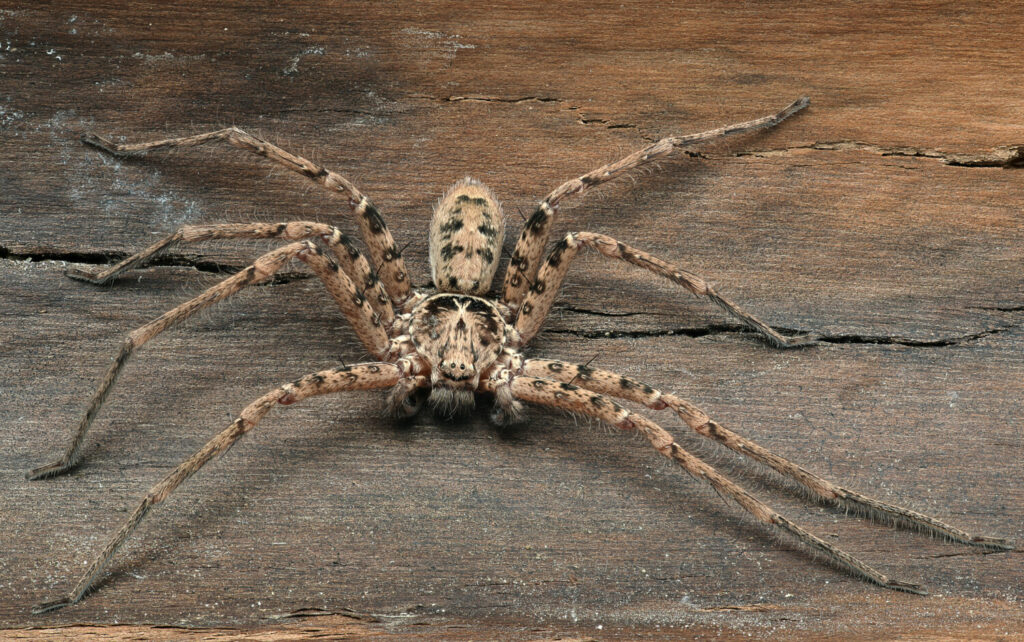
©iSKYDANCER/Shutterstock.com
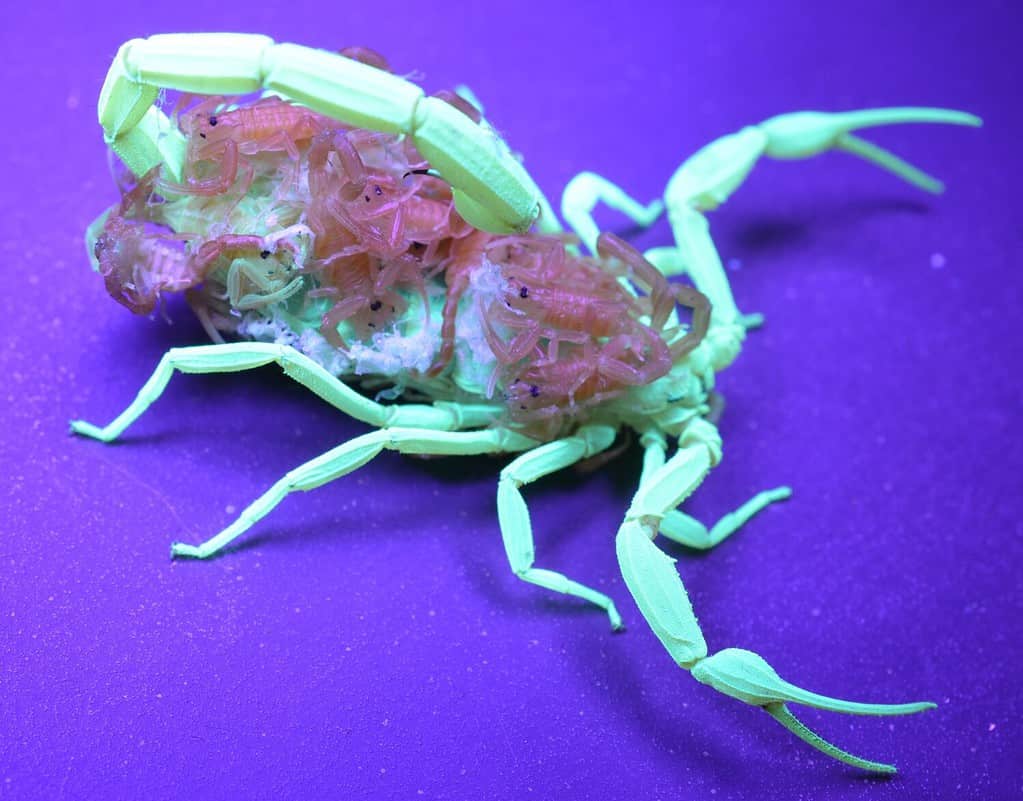
©James C. Bartholomew/Shutterstock.com
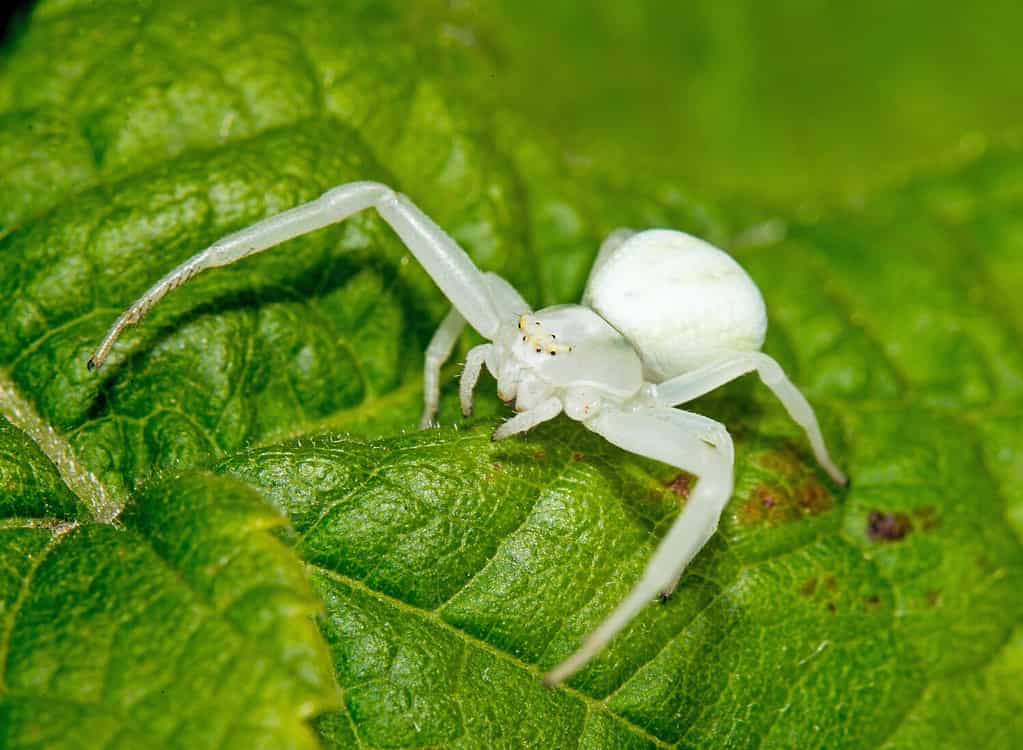
©Muddy knees/Shutterstock.com
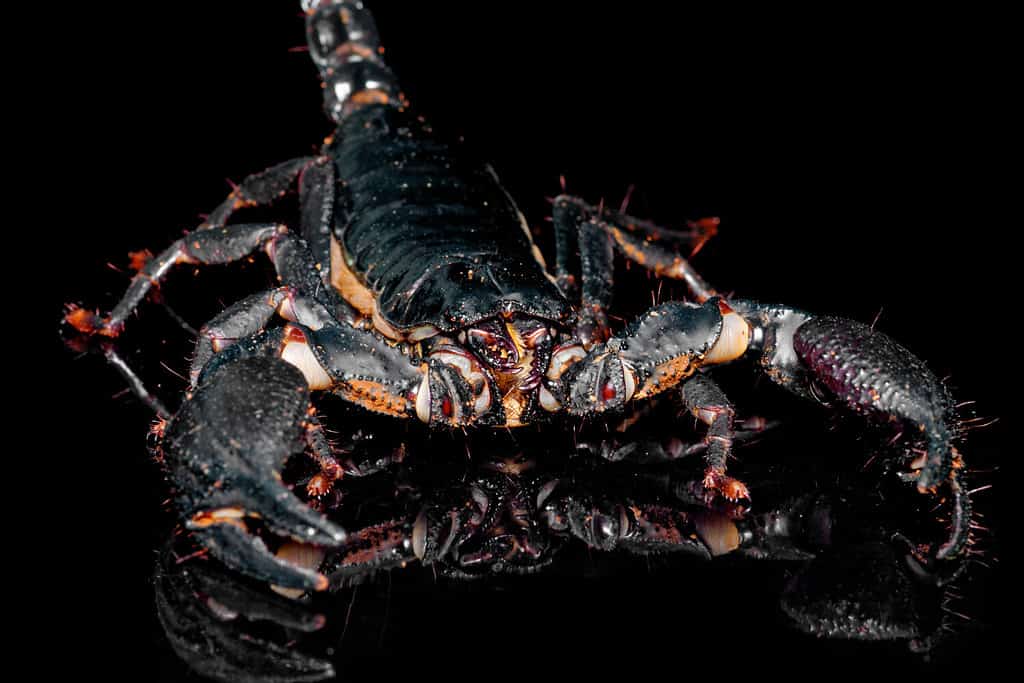
©Valt Ahyppo/Shutterstock.com

©reptiles4all/Shutterstock.com
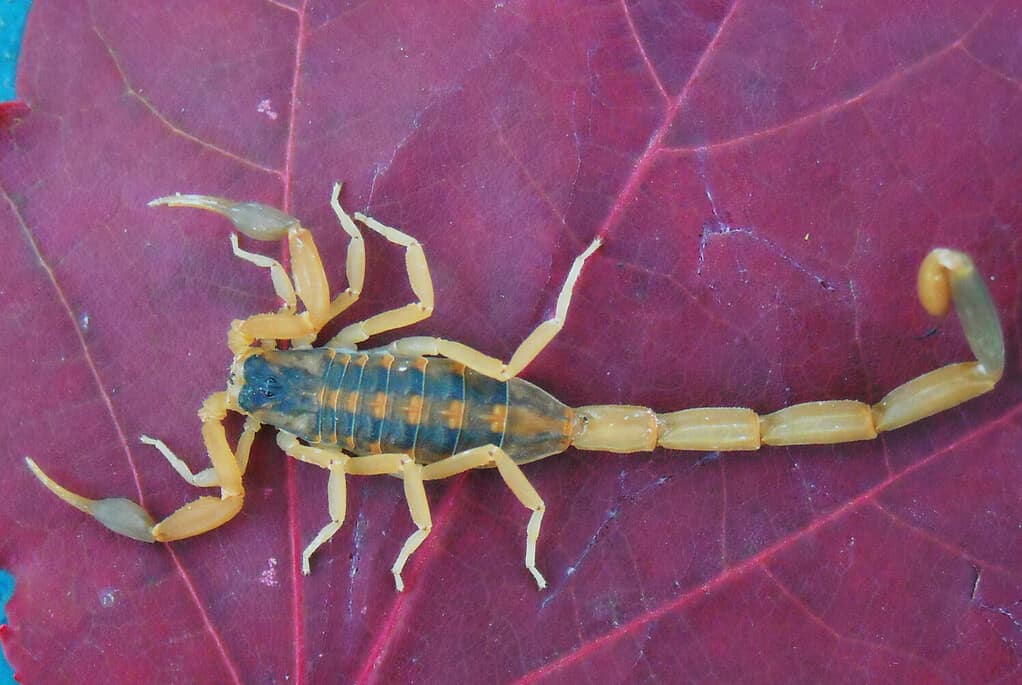
©Matt Levi Media/Shutterstock.com
Spiders and scorpions are related; they are both arthropods in the class Arachnida in the subphylum Chelicerata. They are both arachnids with eight legs and eight eyes. Both are predominantly nocturnal and have a diet made mostly of insects and other arachnids. They do not seek each other out to fight. Typically, these cousins do their best to avoid one another unless prey is exceptionally sparse. If that’s the case, even their brothers and sisters are fair game.
The body parts of the spider and scorpion are similar, with some in-between species having pinchers and fangs. Scorpions and some species of spider, like the wolf spider, carry their young on their backs until they are strong enough to go off and begin life on their own.
Spiders are in the order Araneae, and scorpions are in Scorpiones. One has a venomous piercing tail and pinchers, and the other has piercing, venomous chelicere fangs. They are both predators dating back from millions of years ago, and they haven’t needed to evolve much. Spiders can make wonderful pets, as can scorpions, to the brave of heart. Some spiders can jump extreme Olympic-like distances, and scorpions glow under the blacklight. They’re both interesting, but the spiders who wear their scorpion costumes for their entire lives are the best of both worlds.
1 – 16. Scorpion Spiders
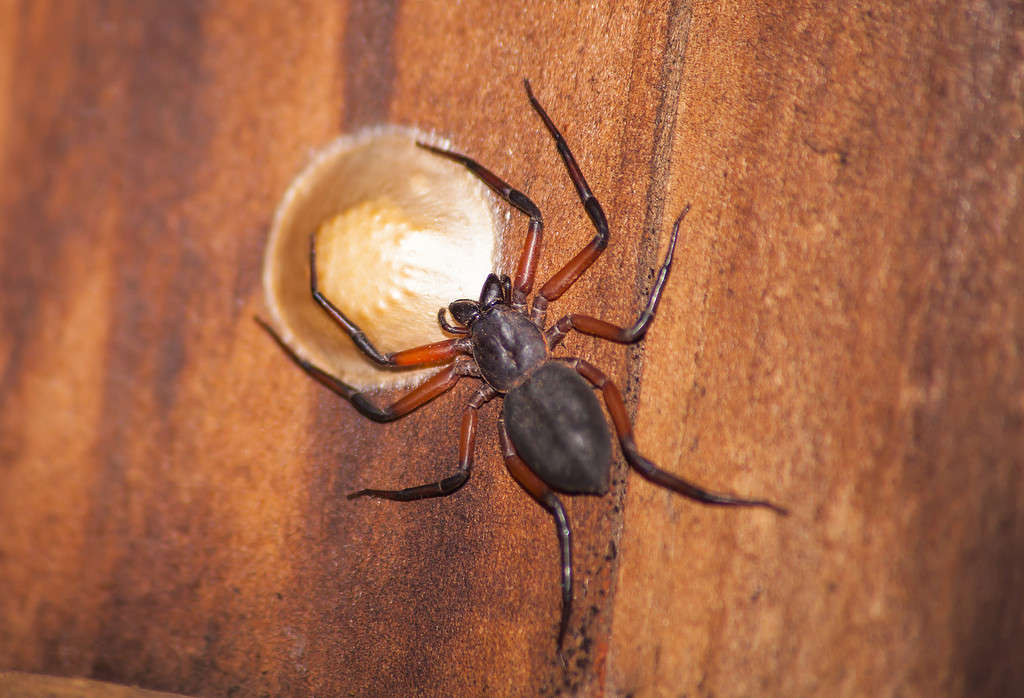
This female scorpion spider (
Platyoides walteri) is guarding her egg sack just like female spiders do.
©kobuspeche/iStock via Getty Images
List of Species Under the Platyoides Genus
- Platyoides alpha – Angola, Namibia, South Africa
- Platyoides costeri – South Africa
- Platyoides fitzsimonsi – Namibia, Africa
- Platyoides grandidieri – Kenya, Madagascar, Aldabra, Réunion, Africa
- Platyoides leppanae – Mozambique, South Africa
- Platyoides mailaka – Madagascar, Africa
- Platyoides pictus – South Africa
- Platyoides pirie – South Africa
- Platyoides pusillus – Tanzania, Zimbabwe, South Africa
- Platyoides quinquedentatus – South Africa
- Platyoides ravina – Madagascar, Africa
- Platyoides rossi – South Africa
- Platyoides vao – Madagascar, Africa
- Platyoides velonus – Madagascar, Africa
- Platyoides venturus – Canary Islands, Africa
- Platyoides walteri – East, Southern Africa, introduced in Australia
Location Found
Platyoides is a genus of spiders belonging to the family Trochanteriidae. This covers African scorpion spiders found in the sub-Saharan and its islands. The islands include the Canary Islands, Madagascar, Aldabra and Réunion. Platyoides are nocturnal and spend most of their lives in small crevices, cracks, or anywhere that forms a safe barrier on either side of their bodies. This also includes loosened bark found on some species of trees. Due to this rather extreme hiding, the arachnid’s bodies are flattened, which is not generally found in spiders as a whole. The genus name Platyoides in ancient Greek means “flat and broad,” which makes sense when you see the arachnids of the genus.
Platyoides Description
Physically, all spiders falling under the Platyoides genus have golden-orange to reddish-orange carapace. The orange coloring is also found around the mouth area and the anterior of the legs. This and their flat bodies help define the spiders as scorpion spiders. The dorsal side of their abdomens also has an orange coloring, though the anterior side is a very light grey. The orange coloring aids them in camouflaging themselves on the sandy Saharan floor.
The loose joints of the spider help them to flatten their tiny nine-millimeter-long bodies into small cracks. They have an extra triangular-shaped tooth behind the two traditional chelicerae or fangs. Their abdomens are flat but also longer than that of most arachnids, aiding in the scorpion look. As with many types of spiders, the females are considerably larger than the males.
17 – 19. Pseudoscorpions
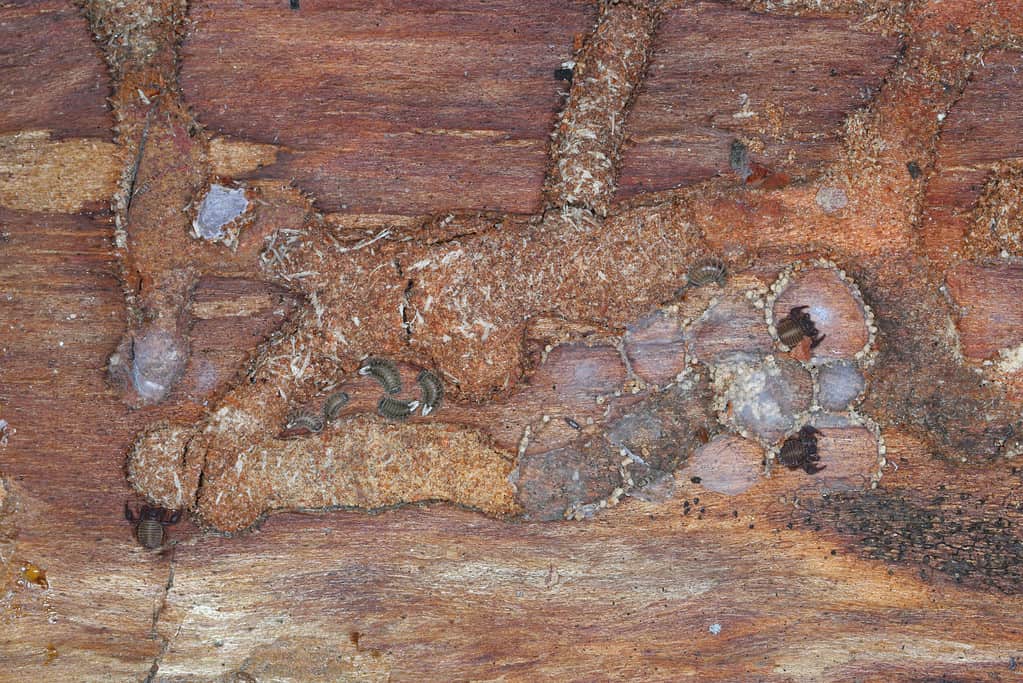
Small invertebrates live under the bark of dead pine trees, including pseudoscorpions, mites, and millipedes.
©Tomasz Klejdysz/iStock via Getty Images
- Chelifer cancroides – North America, Europe, Africa, and Australia
- Garypus Californicus – Southern California, introduced in the northwestern beach area of Mexico
- Pseudogarypus Bicornis – Oregon and Colorado, North America
Location Found
Most pseudoscorpions are found in North America and in the U.S. The extremely minuscule arachnids can be found in humid climates along the coast of California, where they take up residency in the woods of old buildings and docks. The arachnids have been found in the popular Yosemite Park in California. They can also be found in damp environments like leaf litter, under bark, and sometimes in homes. The pseudoscorpions do not pose any threat to humans and are very small.
Pseudoscorpion Description
The pseudoscorpions are extremely small and rarely seen because of such. They are typically two to eight millimeters long with pinchers similar to a scorpion. They do not have a stinger, like real scorpions, and are not nearly as venomous as one. Their venom lies in their pincher, which the pseudoscorpion uses to immobilize their prey, then they use a mildly corrosive substance to liquefy the inside of the insect for consumption.
The pseudoscorpion’s eight legs consist of five to seven segments. Their pedipalps are their pinchers, though they do still have chelicerae with fangs. The color of their bodies is between tannish-yellow to a dark brown shade, with pincers to match.
20 – 21. Whip Spiders
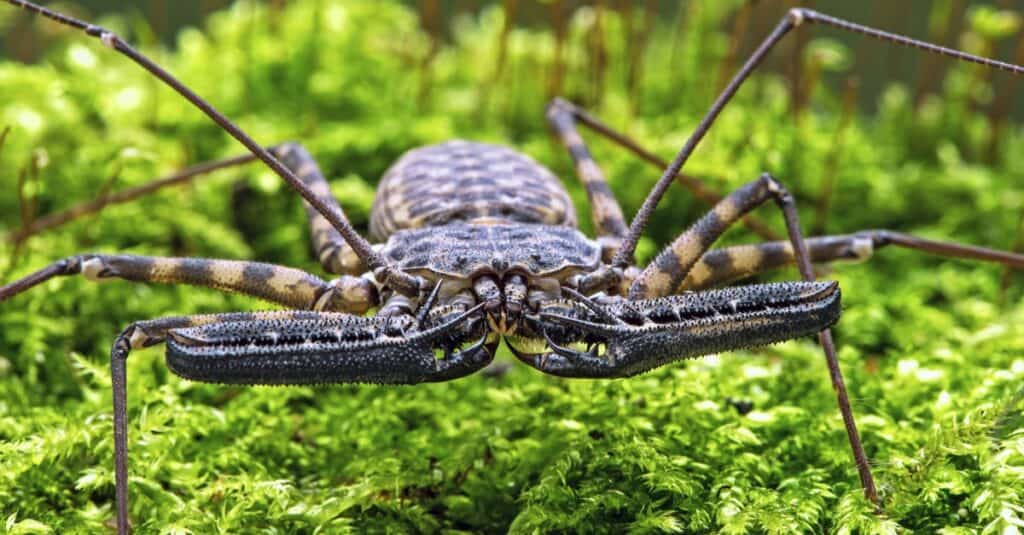
While whip scorpions/spiders are not venomous, they can spray an acidic mix that has a vinegar-like smell.
©davemhuntphotography/Shutterstock.com
- Paraphrynus Carolynae – known by the common name Arizona Tailless Whip Scorpion or Whip Spider – Arizona, U.S., and Mexico – 13 -22 millimeters long
- Phrynus Operculatus – Texas, U.S. North America, and Mexico – 18 – 22 millimeters long
Location Found
The two species mentioned above are primarily found in the U.S. They are not seen very often due to their small size, being nocturnal, and doing an amazing job at hide and seek! The whip spiders are typically found at rest under the loosened bark of trees, under rocks, and beneath dry cacti. Since they are nocturnal and the sandy regions they call home tend to be quite hot during the day, these minuscule spiders in disguise like to sneak out of their hiding places in the evening when the sand isn’t scalding. Then, it’s time to look for some dinner.
Tailless Whip Spider/Whip Scorpion Description
The tailless whip scorpion or spiders are a deep chestnut brown with hints of red on the carapace and pedipalps. Their chelicerae have a triangular-shaped extra external tooth to help them eat their prey. Their diet typically consists of larger insects, some very small lizards, and worms. They have very long, skinny legs that help them perch higher from the ground. The whip spider‘s two front legs have long whips on them for feeling around in front of them for prey. As soon as it touches an insect, the whip spider quickly grabs the prey with its large pinchers. When they feel threatened, the whip scorpions are all capable of spraying a substance much like vinegar at their enemies.
22. Spotted Tailless Whip Scorpion (Phrynus marginemaculatus)
Location Found
The spotted tailless whip scorpion is found in southern Florida, the Bahamas, Cuba, and Hispaniola. Though they are nocturnal and rarely seen, the spotted tailless scorpions are sometimes called Florida tailless whip scorpions. They hide in small crevices during the day in spots where predators cannot reach them. Under rocks or within piles of rocks seems to be a favorite choice.
Spotted Tailless Whip Scorpion Description
The spiders are less than an inch upon reaching maturity, but their long sensory “whip” legs are much longer and can reach four inches long. They do not have any venom and rely on the sensory legs to feel for prey; then, they grab it with their pinchers. The spotted tailless whip spiders are not dangerous for humans but can cause pain if you are pinched by one.
Unlike the other species of whip spiders, these have rows of white or pale-colored spots along their upper abdomen and carapace. They have one small pair of eyes in the front and three eyes on each side of their heads. They may not see very well in front of them, which is where the long “feeler” legs come in handy. Since they walk sideways like a crab, the other three eyes on either side come into play and help them avoid danger.
23 – 30. Camel Spider

©Dmitry Fch/Shutterstock.com
- Eremorhax Magnus – New Mexico, Arizona, Texas, California U.S. North America
- Eremobates Pallipes – Western U.S., Mexico, Southwestern Canada, North America
- Eremocosta striata – Arizona, U.S. North America
- Eremobates Palpisetulosus – Colorado, Nevada, and California, U.S. North America
- Ammotrechella Setulosa – Florida, U.S. North America
- Galeodes arabs – Middle Eastern Deserts, Egypt
- Galeodes granti – Northern Africa, Southeastern Europe and Asia
- Metasolpuga picta – Namibia, Africa
Location Found
Camel spiders, sun spiders, wind scorpions, or whatever you’d like to refer to them as are amazing arachnids that are mainly found in the hot, arid deserts of the Middle East and the mixed shrubbery mid-latitude deserts of Texas and Arizona.
The camel spiders hide during the day as much as they can to avoid the blistering sun. When they do come out while the sun is up, many people believe that the camel spiders are chasing them. This happens more so in the arid Middle Eastern deserts, and they created a bit of a nightmare scene for troops who believed the six-inch spiders to be chasing them to attack them. This was incorrect. The sun spiders chase the shadows of humans to stay out of the sun. They are not aggressive and lack venom. They just look strange.
Camel Spider Description
The wind scorpion was awarded this name because of its fast speed, which may seem even faster in the sand since it is a struggle for humans to walk quickly in. They can reach bursts of speed up to 10 mph! As far as looks go, the sun spider is a strange-looking arachnid that gives alien vibes. They look very much like a mix between scorpions and spiders with their elongated body, odd-shaped chelicerae, and squished faces. Despite their appearance, they are harmless to humans. Some people even keep them as pets. They typically range in size from half an inch to six inches long. The camel spiders found in the U.S. are approximately two inches long as an adult.
31. Black-Tailed Spider (Arachnura melanura)
Location Found
The highly interesting black-tailed spider is found in India, Malaysia, Laos, Indonesia, Singapore, parts of China, Japan, Australia and Sulawesi. It lives along the borderlines of the jungles.
Black-Tailed Spider Description
The black-tailed spider is also called the scorpion-tailed orb weaver and the dragline spider. It looks a bit like a banana peel hanging in the air or caught in a web on a tree. It is also said to resemble a fallen leaf or flower. The spiders can also be brown. Unless you know what to look for, this is one very well-disguised orb weaver! The males reach a small size of 2 millimeters, and the females are approximately 17 millimeters. Like all orb weavers, it eats and recreates its web daily.
32. Scorpion Tail Spider (Arachnura higginsi)
Location Found
The scorpion-tail spider is another orb weaver living on the edges of the jungle. These spiders are native to Australia and can also be found in Tasmania.
Scorpion Tail Spider Description
The juvenile scorpion tail spider can be a wide array of bright colors. As they mature, they take on a brown or cream coloration. Only the females grow the scorpion tail, which they can curl over the top of their heads. The female grows to be 16 millimeters, while the male is only 2 millimeters and does not have a tail.
The photo featured at the top of this post is © Dr. Morley Read/Shutterstock.com
Thank you for reading! Have some feedback for us? Contact the AZ Animals editorial team.





